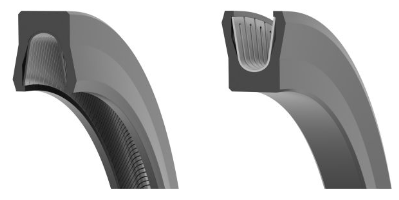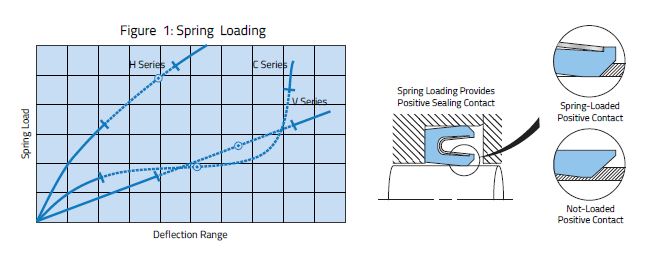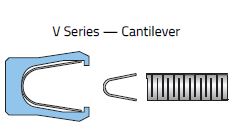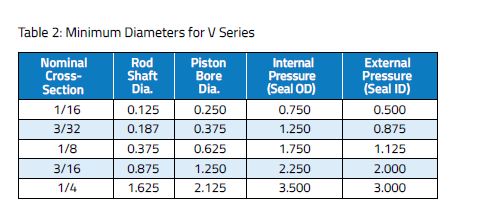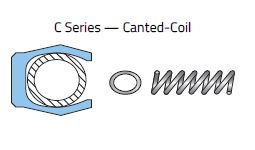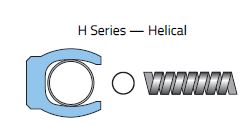Types of Springs in Spring Energized Seals
Are you looking for spring energized face seals?
GFS Spring Energized Face Seals are designed for applications with high pressures and temperatures, cryogenic fluids, extreme media and other service conditions which exceed the performance characteristics of O-rings and conventional elastomeric seals.
Spring energized PTFE seals use one of three different types of springs to energize the jacket. When choosing a spring design, consider two elements: load value and deflection range.
The spring’s load affects its ability to seal, friction, and wear rate. As the load increases, the lips seal tighter, while friction and wear increase proportionately.
The deflection range affects the seal’s ability to compensate for variations in gland tolerances and for normal seal wear. Each spring size has a specific deflection range. The available deflection increases as the seal and spring cross-section grows. This increase could be a deciding factor in choosing a cross-section. Use springs with a wide deflection range when sealing surfaces are not concentric.
In the figure above, we see a relative comparison of load vs. deflection curves for the three types of springs. This shows the typical deflection when the seal is installed. The hatch marks indicate the deflection range through which the seal will work properly. You’ll note that the H series has a much smaller deflection range than the C or V series.
Cantilever Springs
When we talk about V series springs, we’re referring to cantilever springs, designed for dynamic applications involving rotary or reciprocating motion. They also work in static conditions when there is need for a higher deflection spring due to wide gland tolerance, excessive expansion and contraction, or lift-off due to high pressure.
Canted Coil Springs
The canted coil spring – or C series 00 is intended for dynamic reciprocating and rotary applications, or in a static application in which a wide gland tolerance or misalignment is present.
Canted coil springs produce a compression load near the seal’s center. The standard beveled lip seal geometry puts the point of contact slightly in front, forcing the spring back into the spring cavity.
The lip design provides concentrated unit load at the sealing interface, and lubricates the dynamic lip, increasing the wear life. Because of this geometry, the C Series is not the best choice for abrasive medias. We recommend the V series instead.
Helical Springs
H-series springs, also known as helical springs, are made for static applications due to the high unit load. They can be used in very slow or infrequent dynamic conditions where positive sealing is the primary concern rather than wear and friction.
These springs have a relatively small deflection range, which prevents them from use in applications with wide glance tolerances, eccentricity or misalignment.
In these conditions, we recommend considering V or C series spring energized PTFE seals.
To learn more about H, V, and C series springs and their uses, and to find out more about spring-energized PTFE seals overall, be sure to download our Spring Energized Seal Guide.

